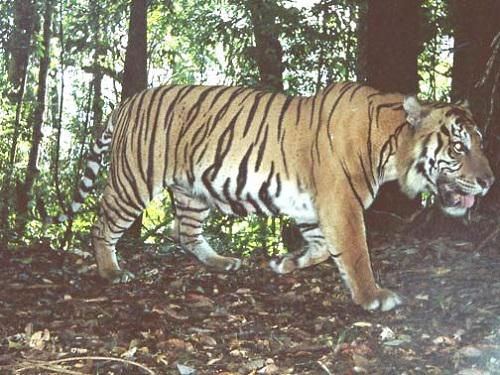Matthew Linkie
Other projects
This project aims to support KSNP management by conducting tiger assessments inside KSNP and to generate greater community support for tiger conservation outside KSNP.

KSNP has been designated the highest priority for wild tiger conservation and a UNESCO World Heritage Site, but KSNP remains under constant threat from road development plans. The field surveys conducted by DICE/FFI in two previous Rufford projects have provided compelling evidence of the importance of the forest areas under consideration for these development, which has resulted in road applications being rejected.
At the same time, the Indonesian Department of Forestry has used the DICE/FFI tiger data to increase the official protection status of our study sites, making it more difficult for road construction to be approved through these core tiger areas. Now, more than ever before, KSNP management requires tiger assessments from data deficient areas inside KSNP that have been identified for road construction. Outside KSNP, problems arising in forest edge communities who suffer the costs of living with wildlife need to be addressed. So, under this Rufford proposal, we are seeking to establish the first formal KSNP community outreach programme.
To continue tiger and prey assessments inside KSNP and establish community outreach outside KSNP, project activities will be completed within the following four objectives:
Objective 1:
Assess tiger and tiger prey populations inside KSNP Train new project personnel to collect fine-scale camera trap data and also broad-scale detection/non-detection data and to provide KSNP management and the Indonesian Department of Forestry with reliable information on the status of tigers within priority forest areas and also across KSNP.
Objective 2:
Develop and implement a community outreach programme for KSNP Develop, test, modify and administer community questionnaire surveys to determine human-tiger conflict locations, patterns and their influence on local community attitudes and tolerance towards tiger conservation management. Use results to develop and implement an outreach programme targeting the worst affected communities.
Objective 3:
Disseminate project information to project partners and policy makers Organise project workshops, update the project website and prepare reports to disseminate results to a wider audience including policy makers, which should increase their knowledge and awareness about the situation of tigers in KSNP.
Objective 4:
Monitor and evaluate project effectiveness Review mid-term and final project performance to ensure that the project has maximum success in fulfilling the above objectives.